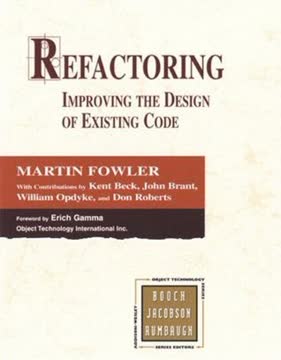Key Takeaways
1. Leadership is about creating an empowering environment, not just giving orders
A problem-solving leader's entire orientation is toward creating an environment in which everyone can be solving problems, making decisions, and implementing those decisions, rather than personally solving problems, making decisions, and implementing those decisions.
Empowerment is key. Effective leadership isn't about micromanaging or dominating others, but about fostering an environment where team members can thrive and contribute their best. This involves:
- Encouraging initiative and creative problem-solving
- Providing resources and support for team members to excel
- Removing obstacles that hinder productivity and innovation
- Creating a culture of trust and open communication
Shift in perspective. Leaders must move from seeing themselves as the primary problem-solvers to becoming facilitators of problem-solving within their teams. This requires:
- Delegating responsibilities effectively
- Developing team members' skills and confidence
- Recognizing and rewarding initiative and innovation
- Leading by example in collaborative problem-solving
2. Effective leaders balance motivation, organization, and innovation (MOI)
Any real problem has one more solution, which nobody has found—yet.
The MOI model. Successful leaders cultivate a balance of:
- Motivation: Inspiring and energizing team members
- Organization: Creating efficient structures and processes
- Innovation: Fostering creativity and novel solutions
Adaptability is crucial. Leaders must adjust their MOI balance based on:
- The specific needs of their team and project
- The stage of development their organization is in
- The challenges and opportunities present in their environment
By cultivating all three aspects, leaders can create a dynamic and effective team capable of tackling complex problems and adapting to change.
3. Self-awareness and overcoming biases are crucial for leadership growth
If you are a leader, the people are your work. There is no other work worth doing.
Understand your biases. Leaders must recognize and overcome:
- Self-blindness: The inability to see one's own behavior objectively
- No-Problem Syndrome: Dismissing issues without proper consideration
- Single-Solution Belief: Assuming there's only one right answer to every problem
Tools for growth. Develop self-awareness through:
- Keeping a personal journal for reflection
- Seeking feedback from peers and subordinates
- Practicing mindfulness and self-observation
By actively working on self-awareness, leaders can improve their decision-making, communication, and overall effectiveness in guiding their teams.
4. Problem-solving leadership focuses on understanding, ideas, and quality
Leadership can also mean preventing change. If you want to stop some change from occurring, you must do one of three things to the environment: kill the motivation, foster chaos, or suppress the flow of ideas.
Three key areas. Problem-solving leaders concentrate on:
- Understanding the problem thoroughly
- Managing the flow of ideas effectively
- Maintaining high quality in solutions
Practical approaches. To excel in these areas:
- Encourage diverse perspectives when defining problems
- Create an environment where all ideas are welcomed and evaluated
- Implement rigorous quality control measures without stifling creativity
By focusing on these aspects, leaders can guide their teams to develop innovative, high-quality solutions to complex challenges.
5. Personal power stems from self-esteem and congruence, not just position
To be a successful problem-solving leader, you must keep everybody's humanness at the forefront.
Beyond positional authority. True leadership power comes from:
- High self-esteem and self-confidence
- Congruence between words and actions
- Ability to build trust and respect
Developing personal power. Leaders can enhance their influence by:
- Working on self-improvement and personal growth
- Practicing authenticity and transparency in communications
- Building strong relationships based on mutual respect and understanding
By focusing on these aspects of personal power, leaders can inspire and motivate their teams more effectively than through positional authority alone.
6. Organizing effectively requires flexibility and understanding group dynamics
Form follows function.
Adaptive organization. Effective leaders:
- Choose organizational structures based on the task at hand
- Understand the strengths and weaknesses of different group dynamics
- Remain flexible and willing to adjust organizational methods as needed
Key considerations. When organizing teams:
- Consider the nature of the problem being solved
- Assess the skills and personalities of team members
- Be aware of environmental factors that may impact group performance
By tailoring organizational approaches to specific situations and teams, leaders can optimize productivity and problem-solving effectiveness.
7. Continuous learning and self-improvement are essential for leadership success
You are surrounded by thousands of opportunities for learning, but without a plan, you will miss most of them.
Commitment to growth. Successful leaders:
- Actively seek out learning opportunities
- Develop personal achievement plans
- Embrace challenges as chances for growth
Practical strategies. To foster continuous improvement:
- Set specific, achievable learning goals
- Utilize a variety of learning resources (courses, books, mentors)
- Practice new skills regularly and reflect on progress
- Create a supportive environment for learning within your team
By prioritizing personal development and creating a culture of learning, leaders can stay adaptable and effective in the face of changing challenges and opportunities.
Last updated:
FAQ
What's Becoming a Technical Leader about?
- Leadership Development Focus: The book emphasizes the journey of becoming a technical leader, highlighting that leadership is a skill that can be developed, not just a title.
- Organic Problem-Solving: It introduces an organic model of leadership, focusing on creating environments where individuals can thrive and innovate.
- Personal Growth: Gerald M. Weinberg shares insights from his leadership workshops to help readers understand their unique paths to leadership.
Why should I read Becoming a Technical Leader?
- Practical Guidance: Offers practical advice and models applicable in real-world situations, making it valuable for aspiring leaders.
- Self-Reflection Encouragement: Encourages self-awareness and reflection, helping readers identify their strengths and areas for improvement.
- Diverse Perspectives: Provides various models and anecdotes illustrating different leadership styles, relatable to a wide audience.
What are the key takeaways of Becoming a Technical Leader?
- Leadership as a Skill: Leadership can be cultivated through practice and self-awareness, rather than being an innate trait.
- MOI Model Introduction: Introduces the MOI model (Motivation, Organization, Ideas) as a framework for developing leadership style.
- Overcoming Obstacles: Identifies common obstacles to innovation and motivation, offering strategies to overcome them.
What is the MOI model in Becoming a Technical Leader?
- Motivation: Emphasizes understanding what drives individuals and teams to perform effectively.
- Organization: Focuses on creating structures that facilitate collaboration and innovation among team members.
- Ideas: Highlights the significance of fostering a culture where new ideas can emerge and be developed into solutions.
How does Gerald M. Weinberg define leadership in Becoming a Technical Leader?
- Organic Definition: Leadership is "the process of creating an environment in which people become empowered," focusing on nurturing rather than controlling.
- Contrast with Traditional Views: Contrasts with conventional views equating leadership with authority and management.
- Empowerment Focus: Emphasizes the leader's role in enabling others to contribute their best, rather than simply directing them.
What are the three great obstacles to innovation discussed in Becoming a Technical Leader?
- Self-Blindness: Inability to see one’s own behaviors and their impact on others, hindering personal growth and leadership effectiveness.
- No-Problem Syndrome: Occurs when individuals believe they already know solutions, preventing exploration of new ideas or perspectives.
- Single-Solution Belief: Limits creativity by suggesting only one correct answer to every problem, stifling innovation and collaboration.
How can I develop my idea power according to Becoming a Technical Leader?
- Embrace Errors: View mistakes as opportunities for new ideas, as "every mistake is a new idea, if seen by a mind prepared to use it."
- Steal Ideas: Encourages borrowing and adapting ideas from others, emphasizing that "the best ideas often come from copulation," or combining existing concepts.
- Encourage Collaboration: Create an environment where team members feel safe to share and build on each other's ideas, crucial for fostering innovation.
What is the significance of having a personal vision in leadership according to Becoming a Technical Leader?
- Guides Decision-Making: Helps leaders prioritize actions and decisions, ensuring alignment with long-term goals.
- Motivates Others: Leaders with a clear vision can inspire and motivate their teams by communicating a sense of purpose and direction.
- Facilitates Resilience: A strong vision allows leaders to navigate challenges and setbacks, remaining focused on ultimate objectives.
What strategies does Becoming a Technical Leader suggest for developing a personal support system?
- Identify Key Relationships: Emphasizes identifying and nurturing relationships that provide both technical and emotional support.
- Reciprocal Support: Support systems should be reciprocal, where both parties benefit, fostering a sense of community.
- Diverse Sources of Support: Encourages seeking support from peers, mentors, and professional networks to enhance growth and resilience.
How does Becoming a Technical Leader address the concept of self-esteem in leadership?
- Foundation of Leadership: Self-esteem is crucial for effective leadership; leaders must care for themselves to lead others effectively.
- Impact on Motivation: Low self-esteem can hinder a leader's ability to motivate others, leading to defensive behaviors or lack of confidence.
- Encouragement of Self-Reflection: Encourages self-reflection to build self-esteem, enhancing leadership capabilities.
What does Becoming a Technical Leader say about the importance of understanding help versus interference?
- Fine Line: Attempts to help can often be perceived as interference, creating resistance among team members.
- Empathy in Leadership: Leaders should approach situations with empathy, recognizing that most people are trying to be helpful.
- Communication is Key: Effective communication can clarify intentions and reduce misunderstandings, fostering a supportive team environment.
What are the best quotes from Becoming a Technical Leader and what do they mean?
- “Leadership is like sex.”: Highlights the complexity and often uncomfortable nature of discussing leadership, suggesting many struggle to articulate thoughts on the subject.
- “If you are a leader, the people are your work.”: Emphasizes that leadership's essence lies in relationships and interactions with team members, not just tasks.
- “When survival is concerned, there’s no choice but to put people first.”: Underscores prioritizing individuals' well-being in high-pressure situations, as performance is linked to their sense of security and support.
Review Summary
Becoming a Technical Leader receives mostly positive reviews, praised for its insights on leadership and problem-solving. Readers appreciate the thought-provoking questions and real-life examples. Some find it applicable beyond technical fields, while others note its dated feel. Critics mention its lengthy anecdotes and occasional lack of direct answers. Many reviewers recommend multiple readings to fully grasp the concepts. The book is seen as valuable for both aspiring and experienced leaders, focusing on personal growth and understanding people in technical environments.
Similar Books










Download PDF
Download EPUB
.epub digital book format is ideal for reading ebooks on phones, tablets, and e-readers.






